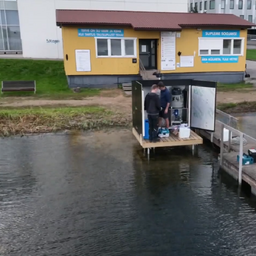The water quality in Anne Canal is often changing. This can be caused by birds, dogs, and swimmers themselves. Currently, taking and analyzing water samples takes several days.
Peeter Laas, a researcher at the University of Tartu, explained: 'We study the genetic information of bacteria to determine their origin. Similarly, we can find out if the bacteria come from dogs, birds, or humans. Based on this, it is possible to find solutions to improve water quality.'
Water samples are taken regularly, but until now it has not been possible to monitor water quality in real time. In Europe, however, improving urban water quality and creating bathing spots is becoming more popular. The Anne Canal measuring station may help with this.
Ciprian Briciu-Burghina, a researcher at Dublin City University, said: 'Tartu has a significant problem with bathing water quality. We want to know what is happening and provide timely data. In Ireland, there is a similar problem in coastal areas. Currently, there is a trend in Europe to make cities more swimming-friendly.'
Currently, the measuring station resembles a booth. But in the future, the sensors will become so small that swimmers won't even notice them. Briciu-Burghina added: 'After a year of testing, we can install small sensors in the lake that won't attract attention but will provide the same information as the current expensive equipment.'
The Anne Canal station is part of the international LinnaSulps project. It involves Tallinn University of Technology, the University of Tartu, and Dublin City University.

